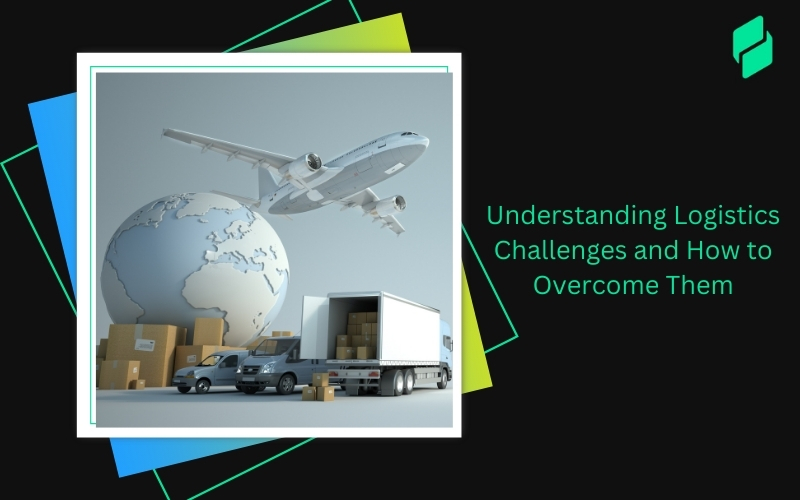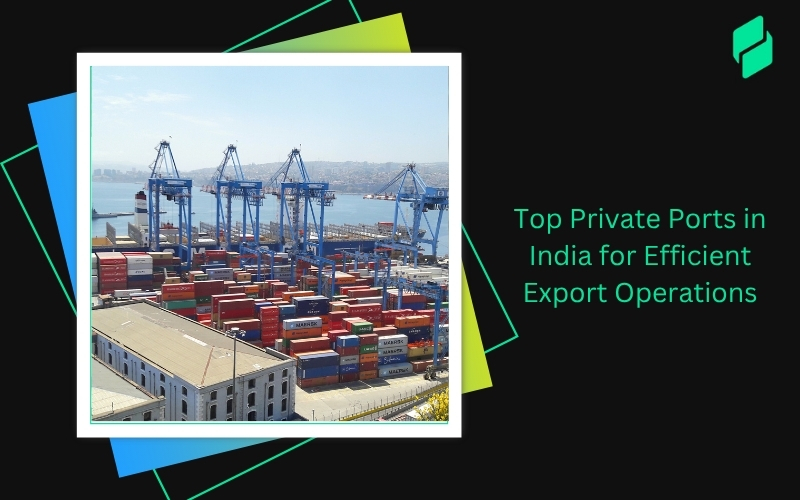Optimize your business: use unlimited savings with Pazago fulfilled now!
Get Started ->Handling insurance documents in international trade doesn’t have to be a hassle. But are you sure your business is fully protected and running smoothly when shipping goods across borders?
These documents are essential for protecting your shipments and ensuring smooth transactions, but understanding the legalities, formats, and evolving digital landscape can feel overwhelming.
In this blog, we’ll break down everything you need to know about trade insurance documentation—making it simple to keep your business secure in the global market.
Ready to make sense of it all? Let’s dive in!
Why Insurance Documents in International Trade Matter
As a business owner dealing with international shipments, you want your goods to arrive safely and on time. Insurance documents in international trade are essential for ensuring that everything goes smoothly. Let’s quickly break down why they’re important for your business.
1. Proof of Insurance for Legal and Trade Requirements
When you ship goods overseas, things can go wrong—damage, theft, or loss. Having insurance is crucial, and you’ll need proof of insurance to meet legal requirements and protect your shipments. This document shows everyone involved that your goods are covered, acting as your safety net.
2. Meeting Letter of Credit Conditions
If you’re using a Letter of Credit (LC) for payments, your bank will ask for a Certificate of Insurance. This ensures your goods are properly insured, so the bank can release payment. Without it, the money doesn’t move—having this certificate keeps things on track.
3. Smooth Customs Clearance

Certain countries may ask for a Debit Note from your insurer to confirm your goods are insured. This document is key for passing customs smoothly and avoiding delays.
Without it, you risk time-consuming clearance issues that could affect your bottom line.
Staying on top of these insurance documents keeps your business compliant, protects your goods, and ensures smooth operations.
Also Read: Understanding Customs Clearance Fees and Procedures in India
How Insurance Documents Are Issued and Who Receives Them
When you’re shipping goods internationally, it’s important to understand how insurance documents are issued and who needs to receive them. These documents protect your business and help keep everything moving smoothly. Let’s break down the process step by step.
1. Issued by Your Insurer or Broker
The insurance documents, like the Certificate of Insurance or a Debit Note, are issued by your insurer or a broker working on their behalf. These professionals make sure the documents reflect the right coverage for your shipment. It’s their job to ensure all the details are in place so you’re fully protected.
2. You Provide Key Info
Before the documents are created, you (the Assured) will need to provide important information. This typically happens through the insurer’s online portal, where you’ll enter shipment details, coverage amounts, and any other specifics. It’s a simple step, but essential to make sure the coverage matches your needs.
3. Sent to the Right People
Once everything’s in order, the documents are sent to the shipper or consignee—whoever’s responsible for the goods. From there, they can be forwarded to the necessary parties, like banks (especially if you’re working with a Letter of Credit) or customs authorities. This ensures there are no holdups with your payment or customs clearance.
Also Read: 10 Required Pre-Shipment Documents for Export Procedure and Shipping Process
Legal Framework and Recognition of Insurance Documents for Indian Businesses in International Trade

For Indian businesses engaged in international trade, understanding the legal framework and recognition of insurance documents is crucial. These documents protect your shipments and ensure smooth trade operations.
While the legal treatment can vary across countries, certain international practices help standardize the process. Let’s explore how these apply to Indian businesses.
1. Legal Recognition Varies by Jurisdiction
The recognition of insurance documents differs depending on the country you're trading with. Some countries may fully recognize these documents as negotiable instruments, while others might not.
As an Indian business, it’s important to be aware of the legal standing of insurance documents in the countries you’re trading with to avoid complications.
2. Adherence to International Practices
Although there are no binding international conventions that specifically regulate insurance documents, Indian businesses adhere to global best practices. Following these practices ensures that your shipments are treated consistently across borders, even if the legal recognition varies from one jurisdiction to another.
3. Key References: ICC UCP and Incoterms®
Indian businesses can benefit greatly from following established international frameworks that guide trade transactions, such as the ICC Uniform Rules for Documentary Credits (UCP) and Incoterms®. These frameworks provide clarity and help protect your interests in global trade.
Also Read: Top 8 Export Shipping Documentation Software in 2024- A Pazago Guide
Formats and Key Standards in Trade Insurance Documentation
As a business owner shipping goods internationally, you're likely dealing with insurance documents that come in familiar formats but are slowly evolving with new tech trends.
Let’s dive into the formats typically used and how the standards for trade insurance documents have changed over time.
Formats and Usage
Most of the insurance documents you’ll encounter, like Certificates of Insurance, are issued in PDF or paper format. This makes sense—PDFs are easy to store, email, and print. Imagine shipping goods to a client in Germany: you could quickly attach a PDF of your insurance certificate to an email, ensuring both the buyer and customs have the necessary proof of coverage.
However, if you’re hoping for fully automated data sharing between systems (like between your shipping company and your insurer), that’s where things can get tricky.
Many platforms aren’t set up for structured data exchange, meaning most businesses, including Indian ones, still handle these documents manually. For example, while you might generate invoices electronically, your insurance documents still require some extra paperwork or manual entry.
Key Standards in Trade Insurance Documentation
Standards for trade insurance documentation have evolved slowly, and understanding the history helps you see why things work the way they do today.
- Back in the 1990s, when businesses started experimenting with electronic data exchange, two key messages emerged to streamline insurance communications: the ‘Certificate of Insurance’ and ‘Consignment Advice for Insurance’. These were built on the UN/EDIFACT standard (IFTMCA), which allowed businesses to share insurance details electronically. Picture this like the early days of email—efficient for its time but not the most modern by today’s standards.
- Since the 1990s, there haven’t been major updates in EDI (Electronic Data Interchange) for insurance documents, so many businesses still rely on paper or PDFs.
New Developments
Recently, in 2022, the Cargo Insurance Data Association (CIDA) introduced a new data standard specifically for structured insurance data. This is like upgrading from dial-up internet to fiber optics—it allows businesses to share insurance information more seamlessly and automatically.
For example, if you’re shipping goods from India to the UK, CIDA’s standards could one day help ensure your insurance data moves directly between platforms without manual input, reducing errors and speeding up the process.
Key Insurance Documents in International Trade

When you're shipping goods internationally, insurance documents are crucial for protecting your shipments and ensuring smooth transactions. Each document serves a specific purpose, from proving coverage to meeting customs or banking requirements.
Here’s a quick rundown of the most important ones, how they work, and why you need them.
1. Certificate of Insurance
This is your proof that the goods are insured. Often required by banks (especially with Letters of Credit) and customs, the Certificate of Insurance confirms that your shipment is protected against risks like damage, loss, or theft.
How You Use It:
- Provide it to banks for payment under a Letter of Credit.
- Submit it to customs for smooth clearance.
2. Insurance Policy
Your insurance policy is the full contract with all the details—what’s covered, what’s not, and the value of the goods. It’s your go-to document for understanding the terms of your coverage.
How You Use It:
- Keep it as official proof of coverage.
- Share it with your trading partners if they need to see the scope of insurance.
3. Debit Note
This is an invoice from your insurer, showing how much you owe for the insurance premium. Some countries may require it as proof of insurance during customs clearance.
How You Use It:
- Pay your premium based on this note.
- Present it to customs if required for imports.
4. Cover Note
Need insurance on the spot? A Cover Note provides temporary coverage until your official policy is ready. It’s a quick way to prove your goods are insured before all the paperwork is finalized.
How You Use It:
- Use it as immediate proof of insurance for urgent shipments.
5. Consignment Advice for Insurance
You send this to your insurer with details of the shipment, like the value and destination, so they can calculate the premium and assess risk.
How You Use It:
- Provide your insurer with shipment details to get the right coverage and cost.
6. Bill of Lading (with Insurance Clause)
This shipping document may include an insurance clause, ensuring that your goods are insured during transit. It’s essential for customs, the carrier, and your buyer.
How You Use It:
- Present it to banks or customs to verify shipping and insurance terms.
Instead of juggling multiple platforms or dealing with paper-based systems, Pazago integrates everything into one easy-to-use solution. From Certificates of Insurance to custom documents, you can manage everything digitally, reducing errors and speeding up your workflow.
Streamline your trade documentation with Pazago’s centralized platform.
Challenges and Future Adoption of Digital Insurance Documentation

As global trade becomes increasingly digital, managing insurance documents across different markets presents its own set of challenges. For Indian businesses engaged in international trade, adopting digital solutions for insurance documentation will be key to staying competitive.
Let’s explore the major challenges and how future trends may drive broader adoption of digital insurance platforms.
Common Roadblocks and Smart Solutions
What Will Drive Future Adoption?
The push toward fully digital trade operations will naturally extend to insurance documentation. As more businesses adopt digital commercial invoices and bills of lading, insurance documents will follow suit. Here’s why.
- Widespread Digitalization of Trade Documents: As other trade-related documents like commercial invoices and bills of lading become fully digitized, the demand for digitized insurance documentation will rise to keep workflows seamless.
- Rising Demand for Structured Data Formats: The future of trade lies in automation, and structured data formats for insurance will allow faster, error-free processing and better integration with global trading partners.
Why Pazago is the Smart Choice for Your Trade Insurance Needs?
Managing insurance documents in international trade can be time-consuming and prone to errors, especially when relying on outdated methods. This is where Pazago steps in as the ultimate solution for modern businesses.
Designed to streamline your insurance documentation process, Pazago offers a fully digital platform that brings ease, efficiency, and peace of mind to your international trade operations.
What Makes Pazago Stand Out?
- Complete Digital Control: Pazago transforms your insurance workflow by allowing you to manage everything online—whether it's generating, updating, or sending Certificates of Insurance.
- Real-Time Tracking and Monitoring: Stay on top of your shipments and insurance documentation with Pazago’s real-time tracking features.
- Customizable and Flexible: Every business has unique needs, and Pazago’s platform allows you to tailor insurance coverage and documentation to meet specific requirements.
- Seamless Integration with Trade Documents: Pazago doesn’t just handle insurance; it integrates with other trade documents like commercial invoices and bills of lading.
- Security and Compliance: With Pazago, you don’t have to worry about compliance issues or data security. The platform adheres to international trade regulations, ensuring that all your documents are compliant and securely stored.
Stop juggling multiple platforms or dealing with slow, manual processes and experience the ease and reliability of digital trade insurance management.
Get Started with Pazago Today!


.png)








